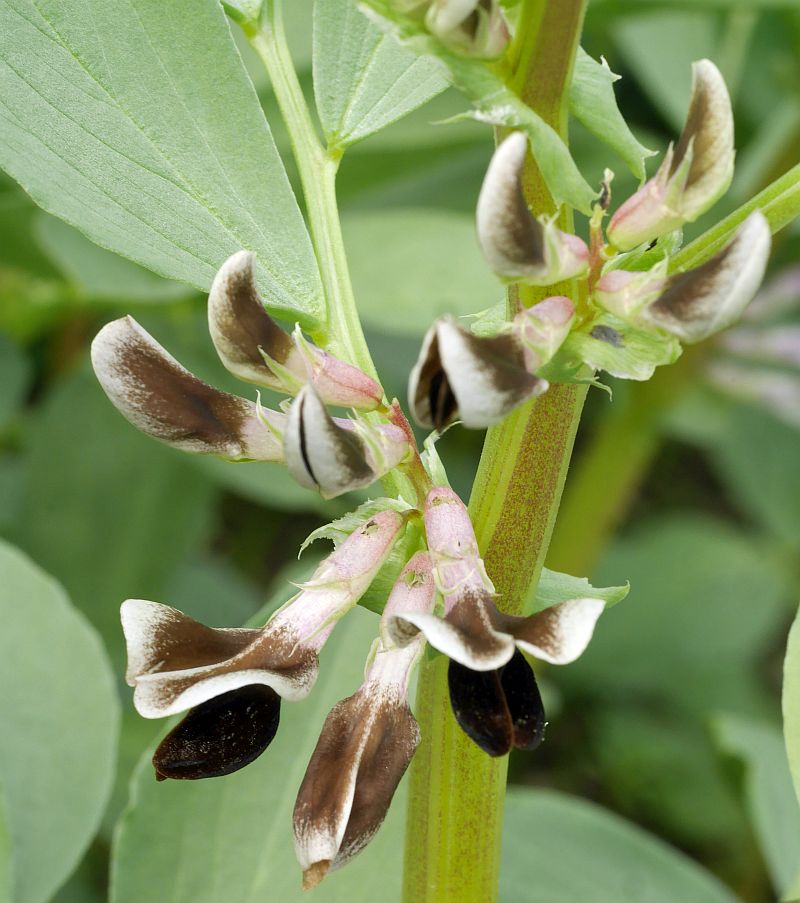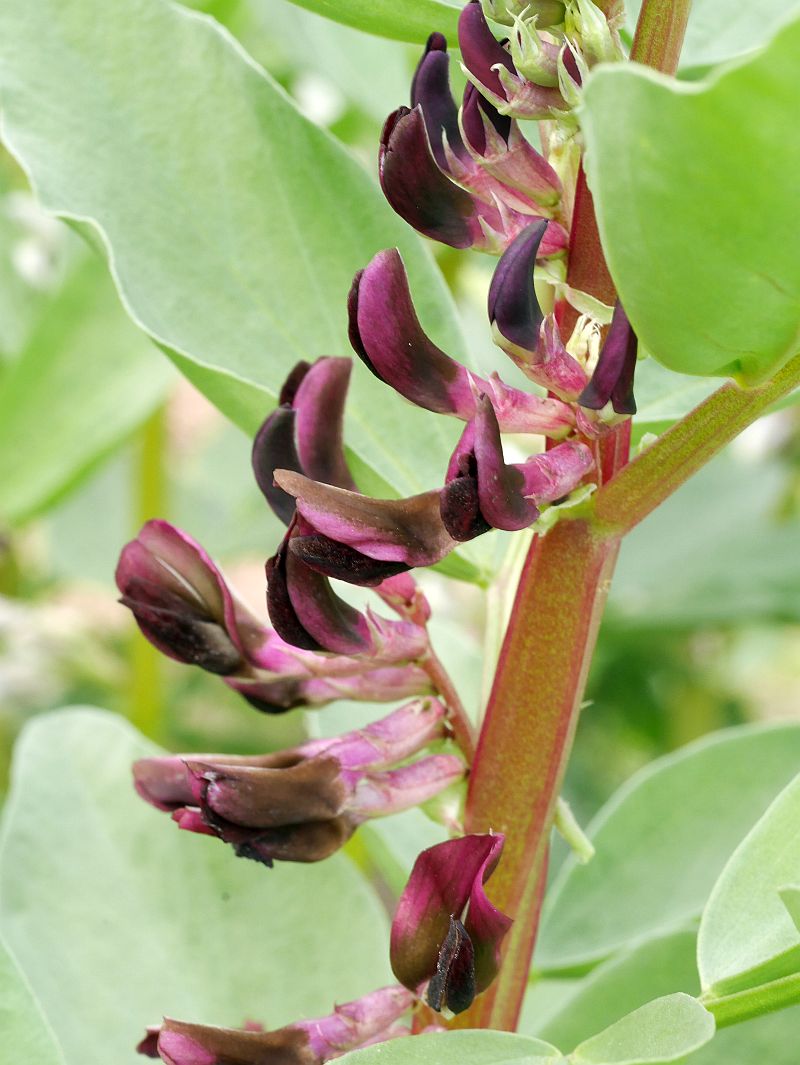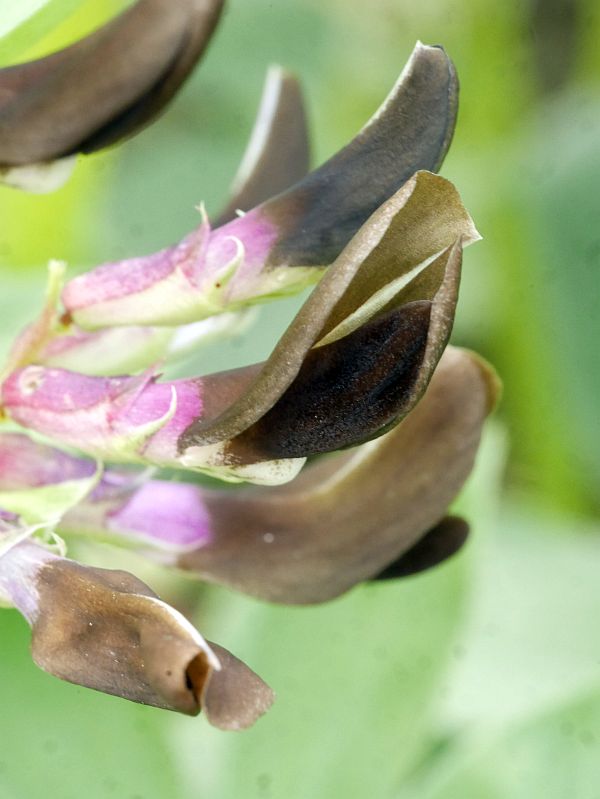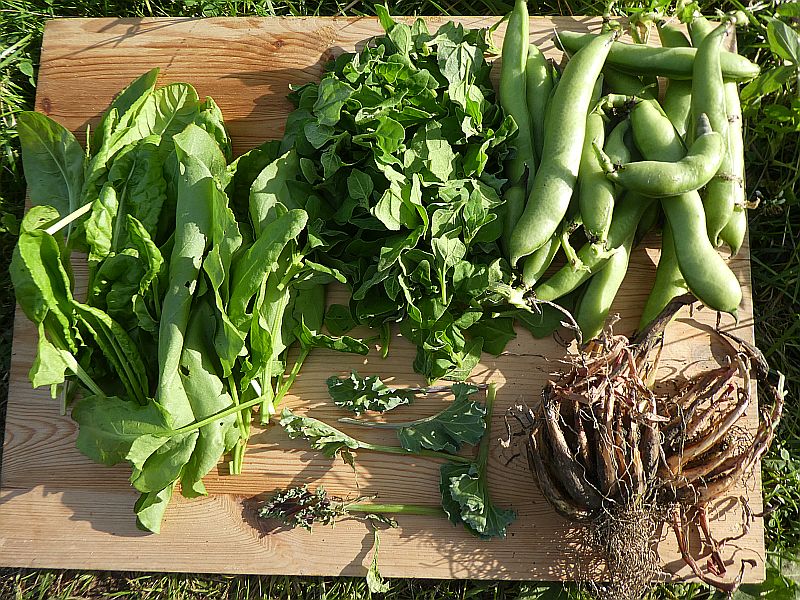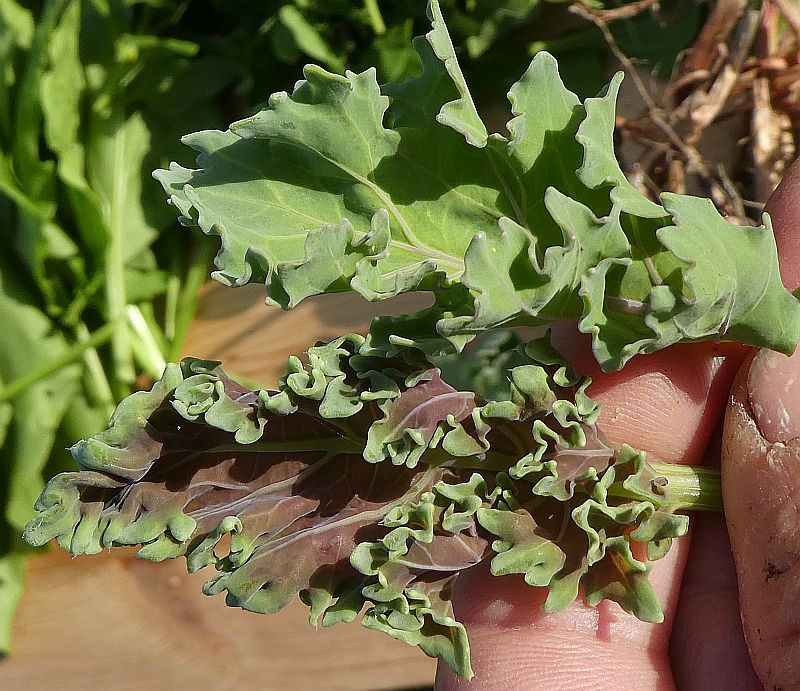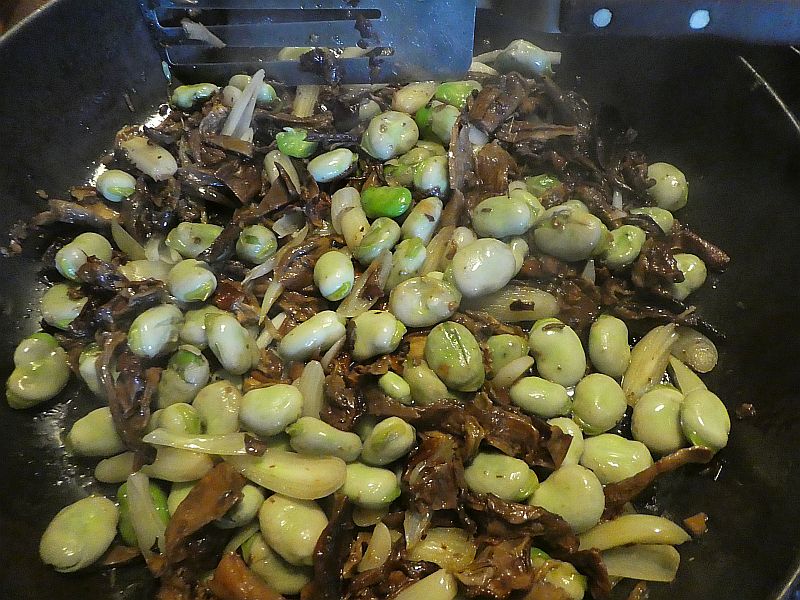KVANN Trøndelag med meg selv i spissen har etablert en del samlinger av nytteplanter og driver også en del forsøk og prosjekter med støtte fra Sparebankstiftelsen gjennom Schübelers hager
Her finner dere en oversikt over det som skjer i hagen denne sommeren.
Besøk
Hagen er fritt tilgjengelig for publikum og vi arrangerer hagevandringer, kurs og friluftsdager. Sommeren 2024 tok vi imot grupper av innvandrere fra både Trondheim og Malvik. Det er arrangert to hagevandringer for medlemmer av Trondheim Sopp og Nyttevekstforening i mai og august samt for deltagere av Nyttevekstreffet i juni. Den siste planlagte hagevandring arrangeres søndagen 22. september kl 14 som en del av Økouka. Det ble også arrangert Pollinatortelling i samarbeid med La Humla Suse i begynnelsen av juli.
Se også Arche Noah besøker Trøndelag
Verdenshagen
Hagen fortsetter å vokse seg til og det er plantet en god del nytt denne sommeren og det er laget flere planteskilt.
Av mer eksotiske nytteplanter er det plantet en kuldetolerant variant av sukkerrør, søtpotet samt Kinesisk yams (Dioscorea polystachya) og adlay / Jobs tårer Coix lacryma-jobi (en sort fra Japan). Sistnevnte er en flerårig kornvekst Poaceae. To sorter Cyperus esculentus (chufa eller tigernøtter) fra starrfamilien er også plantet: knollene er søte og gode.
KVANNs Grønnsaksreservat og forsøksfelt
Det var en kald vinter og ingen av våre flerårige kål overlevd ute. Heldigvis har de fleste sortene overlevd som stiklinger og et nytt felt med 9 sorter er plantet samt en vill art, Brassica cretica. Interessant nok resisterte sistnevnte angrepet av kålmøll – smaken er mer bitter enn de øvrige sortene.
Etter vi startet med utprøving av ca 15 sorter gamle nepesorter for 3 år siden satser vi nå videre med følgende sorter som vokser bra hos oss (frøoppformeres lokalt fremover): Korova fra Sverige (veldig store neper med god smak), Norsk Elite, Målselvnepe “Væres Venners”-linjen (utgangspunkt var 5 sorter fra Nordgen), Svedjenepe “Væres Venner” og en lokal Snøball-nepe. Nytt i år er at vi tester sorten “Gränsrova” fra Sesam, en sort som var / er dyrket nær grensen til Norge på Østlandet.
Vi tester videre 3 kålrotsorter som er lovende fra tidligere forsøk: Bangholm Sandnes, Bangholm Vereide (fra Nordgen) samt svensk Baggens fra Sesam.
I år var det dyrket 21 sorter erter inkl. følgende norske sorter: Norrøna, Carlinert, Askerert (Ringeriksert?), Tidlig Lav, Engelsk Sabel Grimstad, Lomsert, Slikkerter fra Våler , Tidlig Sabel fra Kvithammer, Tidlig Grønn Sabel og Japansk Margert fra Tingvoll (sistnevnt oppdaget vi ifjor, hadde kommet til Tingvoll rundt 1920 fra USA).
Medlemmer av felleshagen har ikke lov å dyrke med noen form for plastdekke (ingen fiberduk er tillatt pga mikroplast) og da kan dyrking av gulrot og pastinakk være utfordrende pga angrep av gulrotflue. Derfor har vi et forsøk i samarbeid med medlemmer hvor vi bruker og sammenligner forskjellige metoder for å slippe eller redusere angrep: vi kjøpte inn forskjellige sorter som skal ha en viss resistens: Fly Away, Maestro, Ibiza og Resistafly; det dyrkes i opphøyde bed (pallekarm) fordi fluen skal fly lavt og på den måten ikke oppdager plantene; samplanting med Tagetes lucida.
Vi prøver to sorter bindsalat (celtuce) som er en variant av vanlig salat (Lactuca sativa) som er selektert for de tykke stilkene. Den kinesiske sorten “Kinesisk Keule” har vokst best og jeg håper at frøene modnes før frosten!
Forsøket med frilandstomatene fortsetter (dyrkes ved siden av en steinmur som magasinerer varmen). De tidligste sortene fra forsøk de to siste årene er med videre: 42 days, Linda Sibirsk og Turbo Reakivny som alle har gitt gode avlinger fra midten av august.
Det er satt igang forsøk med tidlige lave sorter solsikker med tanke på at frøene vil modne slik at fuglene og særlig stillitsen kan få lokal produsert mat til vinteren.
Vi fortsetter seleksjon av en fargerik landsort bondebønner og et nytt forsøk med tidlige sorter bondebønner med tanke på en sort som kan dyrkes enda lengre nord. 7 sorter var sådd i slutten av mars, både kommersielle sorter som Hangdown, Express og De Monica og fra den tyske genbanken IPK Gatersleben. Feltet var høstingsklar allerede i midten av august! De øvrige bondebønnene var sådd i slutten av mai for å unngå at sortene fra de to forsøkene krysset seg med hverandre.
Vi fortsetter også i år med seleksjon av en tidlig landsort løpebønner (Phaseolus coccineus) som tok utgangspunkt i bønner som modnet ifjor fra ca 20 tidlige sorter fra IPK Gatersleben og andre kilder.
Vi oppformerer to nye gamle virusrenset sjalottsorter fra Anders Nordrum – Ørskog og Luntvika
Vi fortsetter dyrking av spennende sikori sorter, både en lokal Witloof landrase (for innedriving vinterstid), rotsikori sorten Soncino som brukes som rotgrønnsak og diverse andre spennende bladsikori sorter som ikke går i stokk hos oss. Vi dyrker videre til frø i 2025.
Vi fortsetter dyrking av ettårige (tidlig) svartrot (Scorzonera hispanica).
Det er også igangsatt et forsøk med 36 sorter pipeløk (Allium fistulosum) sådd og plantet ut i august og høstet til våren som ekte “vårløk”.
Bærbusker, frukttrær og nøttetrær
Områdene i felleshagen satt av til frukt, bær og nøtter nærmerer seg fullt. Det siste området i sør plantes opp nå i august og september deriblant Hjertenøtt sortene Kalmar og CW3, Valnøtt Haratun og Goumi (Elaeagnus multiflora) sorten Red Cherry.
Tag Archives: bondebønner
Saint John’s Eve Felafels
Yesterday was St. John’s Eve and many Norwegians (and other Scandinavians) celebrated what is known here as Sankthans or Jonsok with communal bonfires, the big midsummer celebration. Sankt Hans is a short form of Sankt Johannes. There is a special perennial onion which was traditionally harvested on this day in the Netherlands, which I believe to have a much large potential than its current status as a local food crop, as it is so much easier to grow, in particular in areas increasingly suffering from summer droughts and water shortages and avoids common pests of onions and shallots by its early growth and perhaps also resistance. If nothing else, it complements shallots and onions in that it is available much earlier in the year!
There is genetic evidence that St. John’s onion (Johannes-løk) has a unique triparental origin A. × cornutum with three putative parental species, A. cepa, A. pskemense, and A. roylei. Hardiness is probably bestowed by hardy Allium pskemense which has been growing in the Ringve Botanical Gardens in Trondheim for many years. A similar hybrid has been found both in Germany, Croatia and India. It was perhaps more widely cultivated in the past and these are just remnant populations. On 21st June I harvested the Croatian accession from the Onion Garden Chicago at the Ringve Botanical garden which had been left for two years resulting in hundreds of tightly packed onions and on 22nd June from the World Garden at the Væres Venner Community Garden. I replanted in both gardens single bulbs separated by about 10cm. in a roughly circular patch.
Last night, St. John’s Eve, I started a vegetarian midsummer tradition by making St. John’s Felafels with dried broad beans stored since the autumn and golpar spice (from dried seeds of a mix of Heracleum sp.).
See more about Johannes’ shallot at https://www.edimentals.com/blog/?p=22601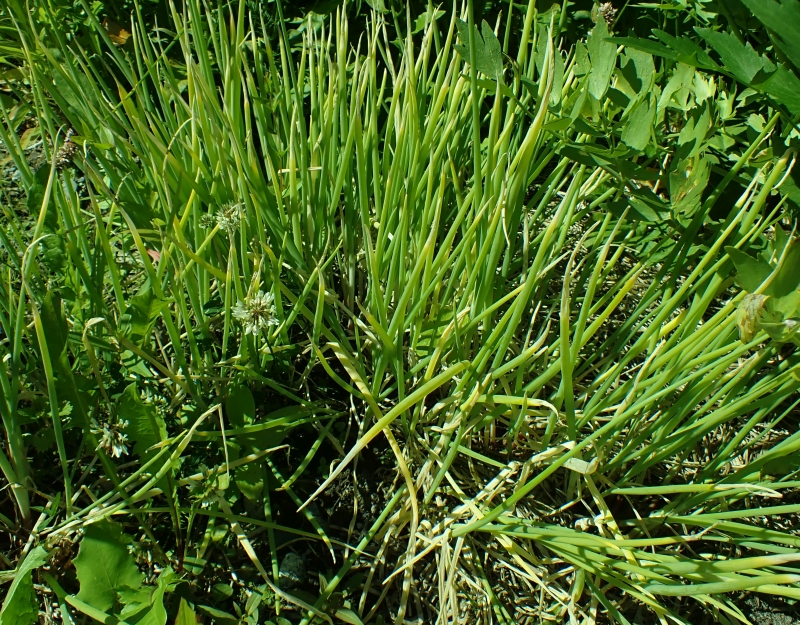

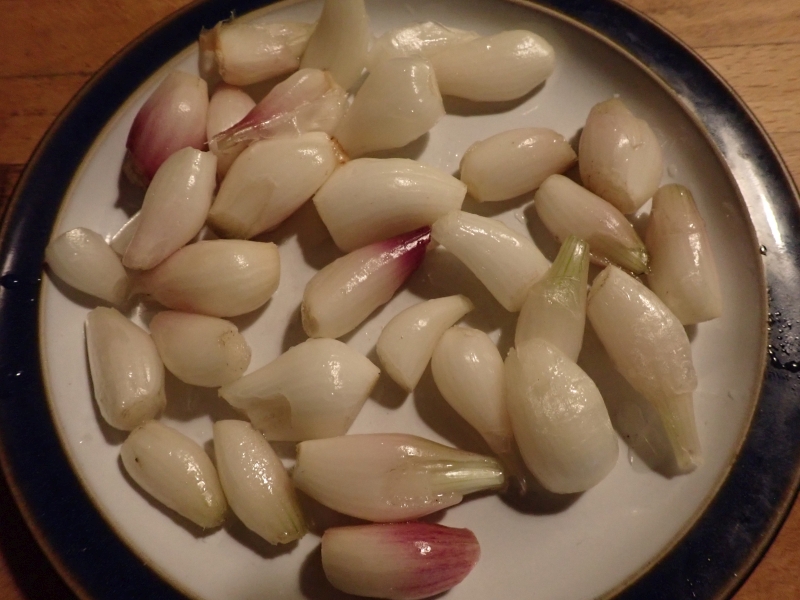


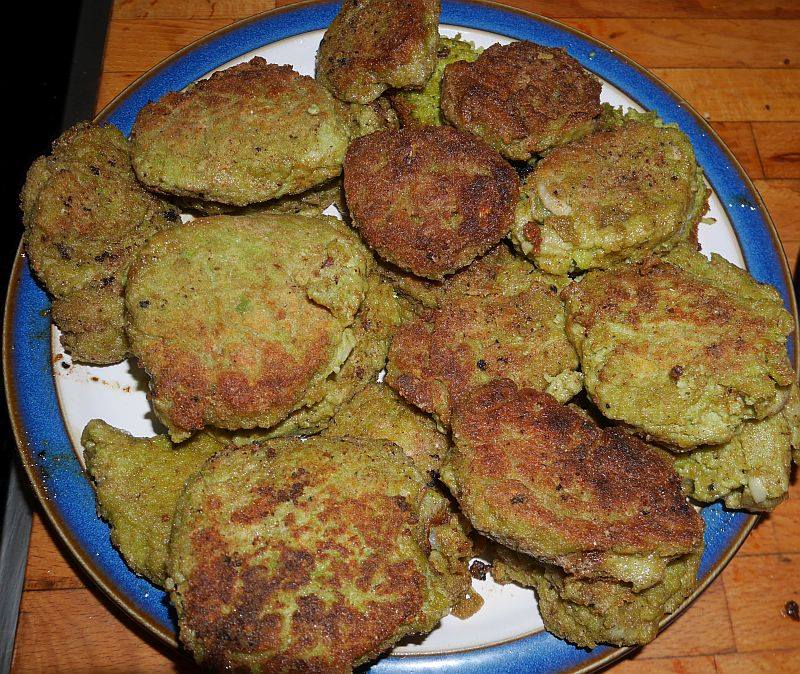
Broad Bean Land Race
First and second harvest of broad beans for drying to eat and next year’s seed. This is my “Væres Venner Mix” land race selected for maximum bean diversity each year – a joy to work with and candy for the eyes! The first sowing (first picture) were sown on 18th May and harvested on 19th September; the second sowing was on 2nd June and were harvested on 24th September (both were 5 different colour selections from last year’s crop; sown in 5 adjacent rows!)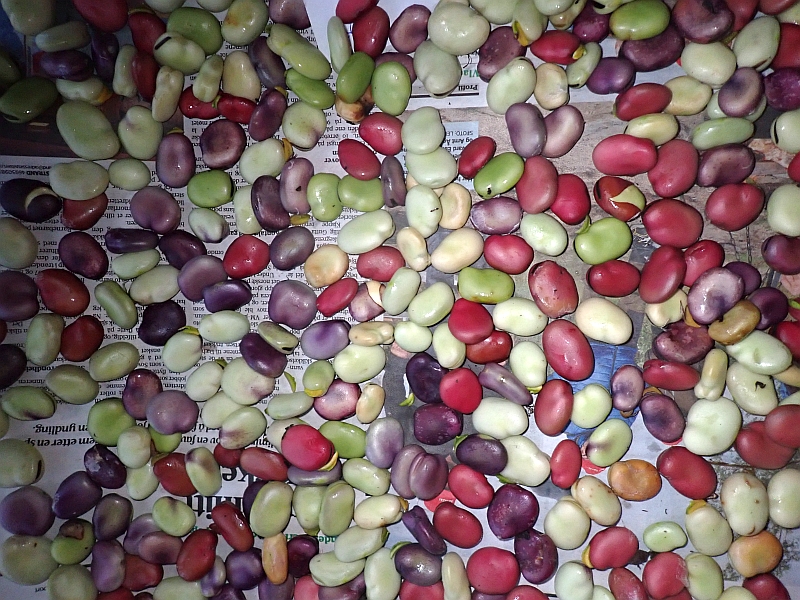

Green pasta
This is what I had for dinner last night: a Mediterranean-diet style green (wholegrain spelt) pasta dish with wild fungi, annual greens, broad beans, weeds, golpar, chili and epazote (see more on the ingredients used under the picture!).
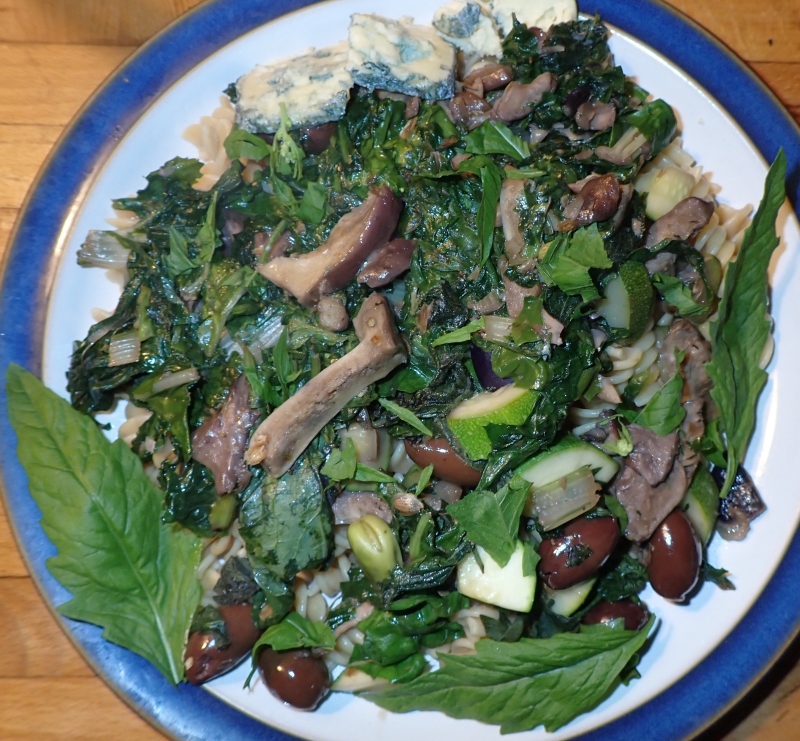
My daughter, Hazel, peeling away the inedible slime layer of slimy spike-cap (sleipsopp):
We used two mild tasting Russula species (kremler):
 Broad beans (bondebønner) and swiss chard (mangold)
Broad beans (bondebønner) and swiss chard (mangold) 

 Shallots (Finnish heritage variety) which were harvested in September 2022 are still looking good:
Shallots (Finnish heritage variety) which were harvested in September 2022 are still looking good: Sonchus oleraceus (common sow-thistle / haredylle), probably my most used veg at this time of year, even though most consider it a weed! WEEDS ARE TO FEED!
Sonchus oleraceus (common sow-thistle / haredylle), probably my most used veg at this time of year, even though most consider it a weed! WEEDS ARE TO FEED!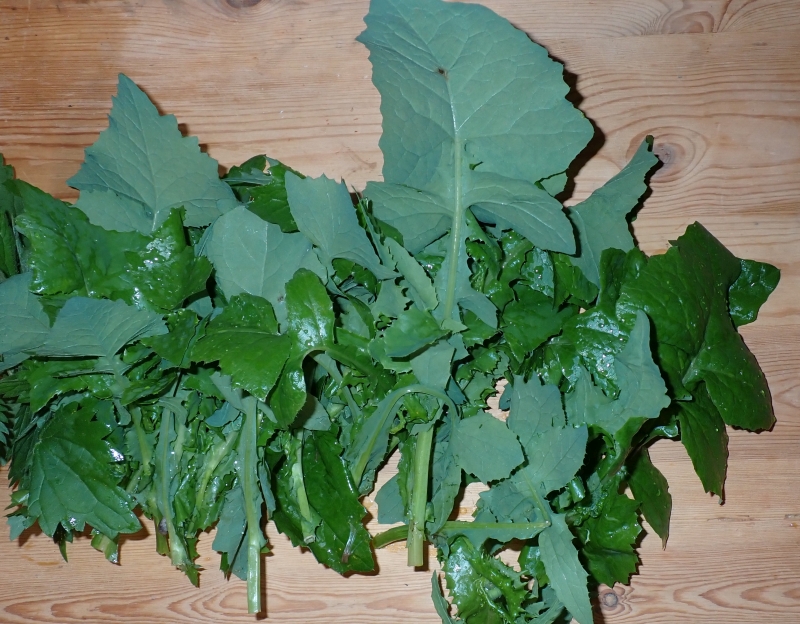
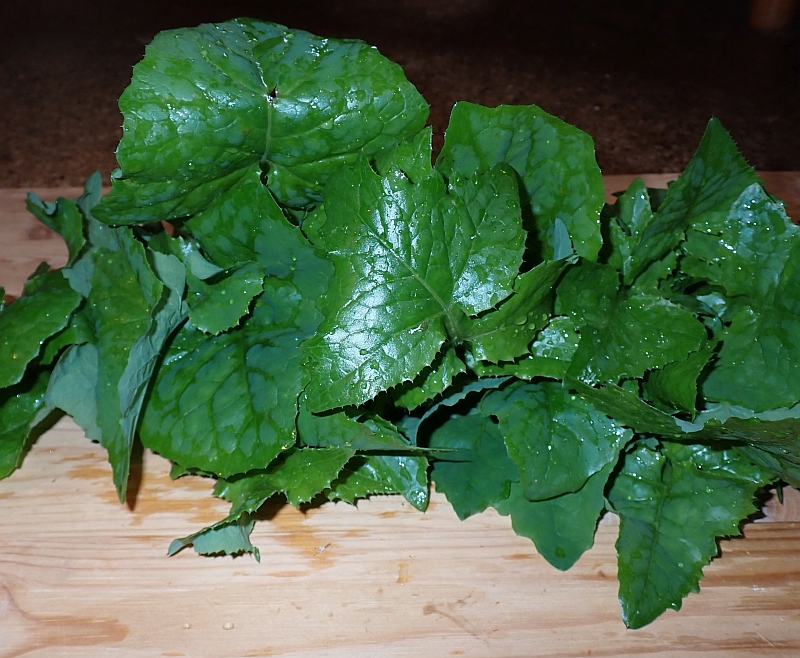
Epazote, wormseed / sitronmelde (Chenopodium ambrosioides), leaves from an 11-year old plant which is overwintered indoors in a cold room down to 3-4C:
 Even the guest bed is in use for drying seed! Here is the 2023 crop of golpar (Heracleum spp.) seed :) :
Even the guest bed is in use for drying seed! Here is the 2023 crop of golpar (Heracleum spp.) seed :) :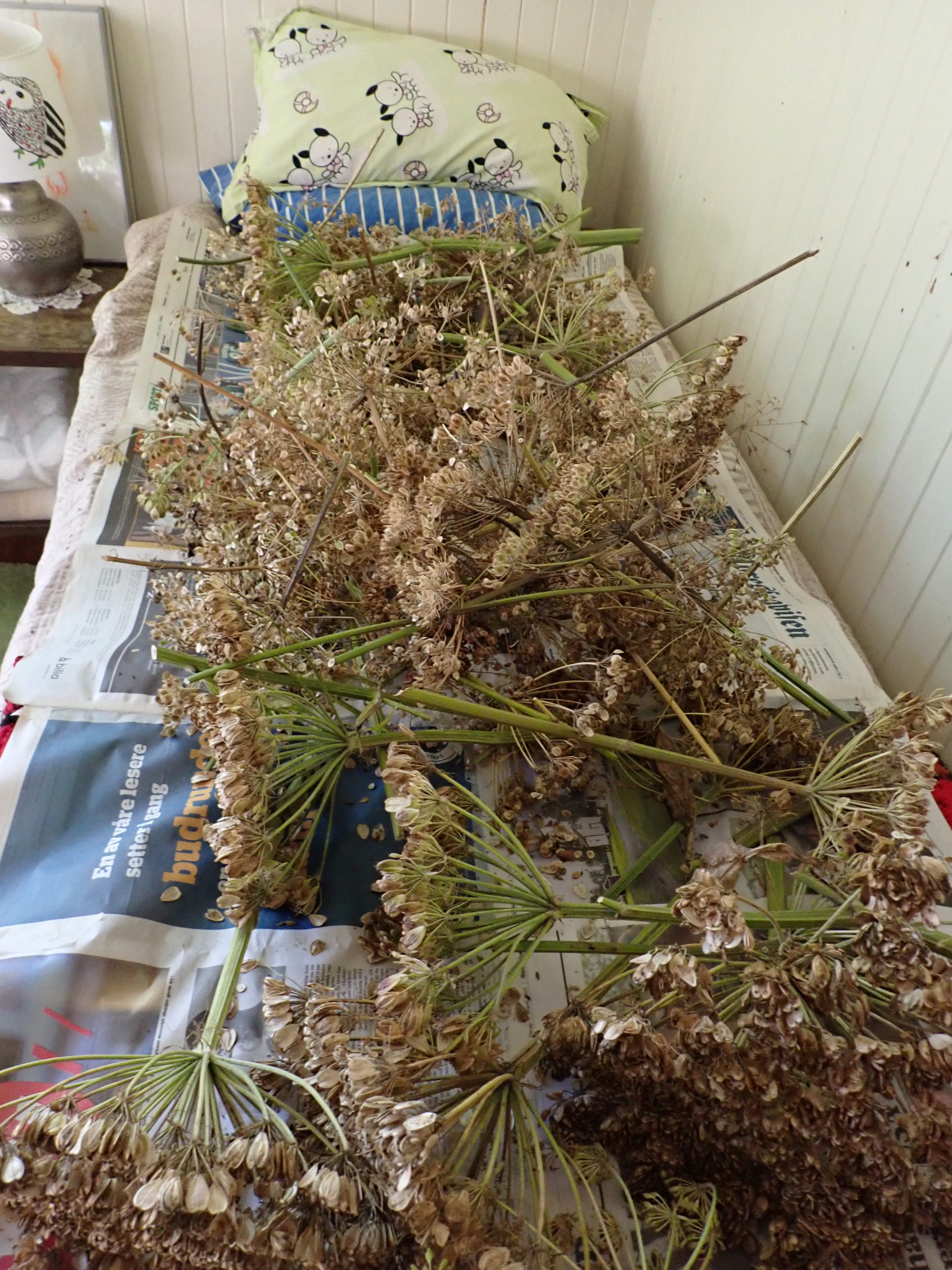 Otherwise, we used courgette, nettle, chili and Hitra Blue organic cheese!
Otherwise, we used courgette, nettle, chili and Hitra Blue organic cheese!
50 and 20 year celebrations
To celebrate our good friends’ Jurgen Wegter and Ingvild Haga’s 50th birthdays together with Meg’s 50-year anniversary of arriving in Europe for the first time (in Southampton near where I lived at the time) as well as my 50 year anniversary of leaving school and a memorable holiday with 20-30 school friends in Newton Ferrers in Devon, we made a special gourmet dinner of green mac-cheese. It had masses of veg mixed in – the year’s first broad beans and swiss chard, chicory, common sow thistle (Sonchus oleraceus), Allium senescens leaves, shallots and garlic from last year, rehydrated winter chantarelles, golpar – ground seed of hogweed – Heracleum spp., together with ramsons salt, chili, sun dried tomatoes and mustard, all in a wholegrain spelt white sauce with wholegrain spelt pasta; it was topped with alpine bistort bulbils).
Not to be left out, the Extreme Salad Man contributed one of his Meditteranean diet inspired multispecies salads commemorating it is now almost 20 years since he put together a salad from home grown ingredients in Malvik comprising 537 ingredients. something the world hasn’t seen before or since (see https://www.edimentals.com/blog/?p=18997). The record was set on 24th August 2003. This time there were a mere 106 ingredients….sad to see, but he must be losing it….
Thanks to Jurgen for the salad pictures: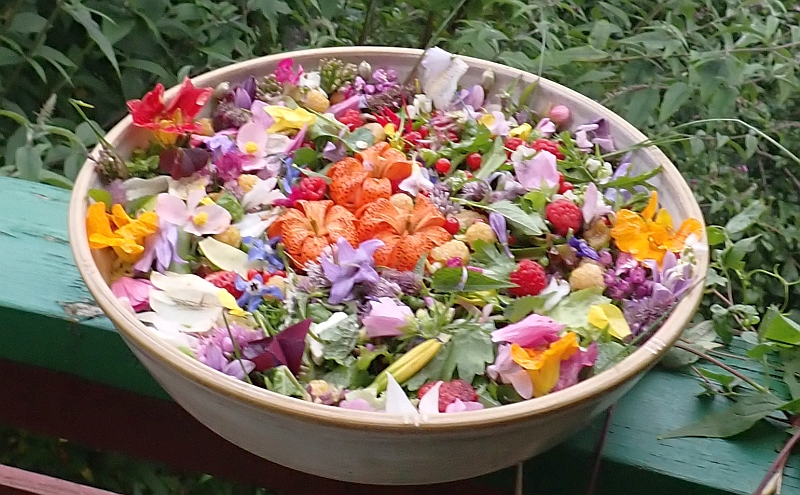
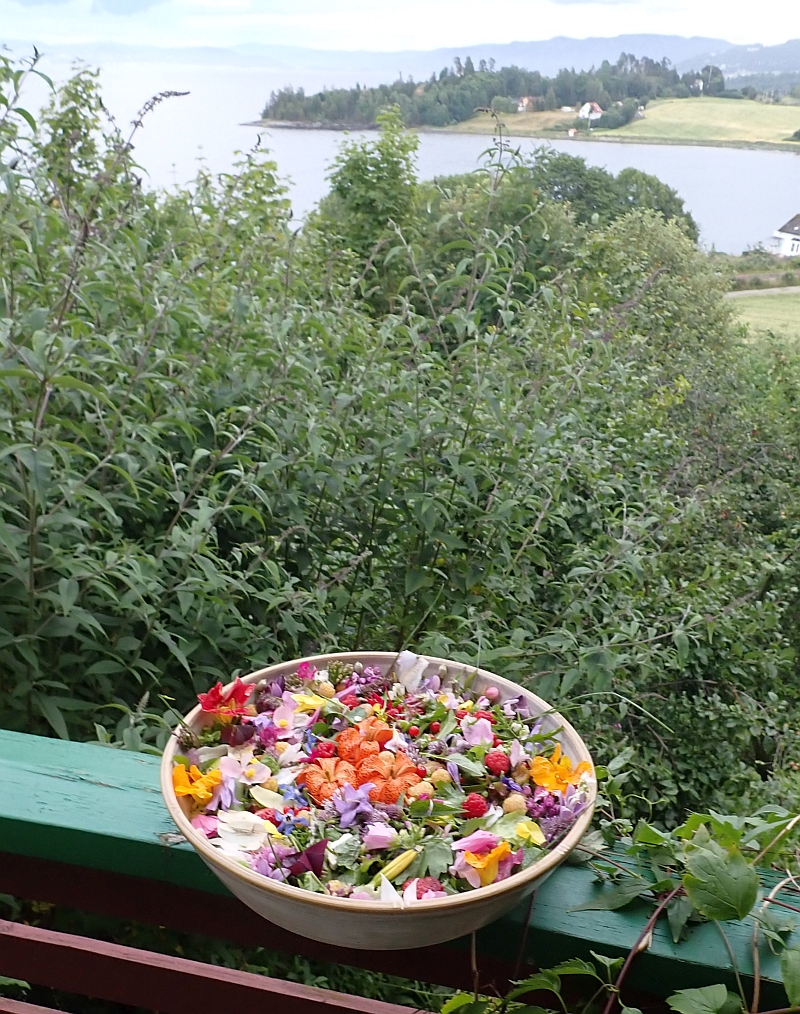

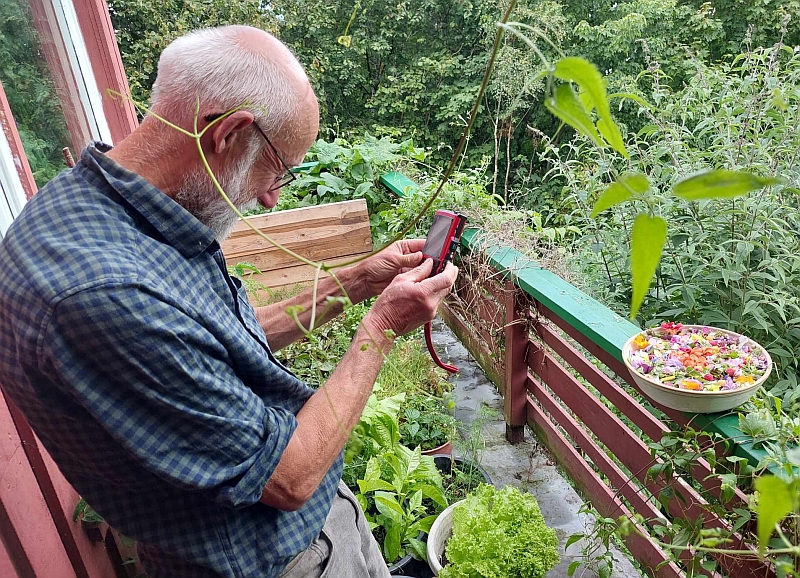
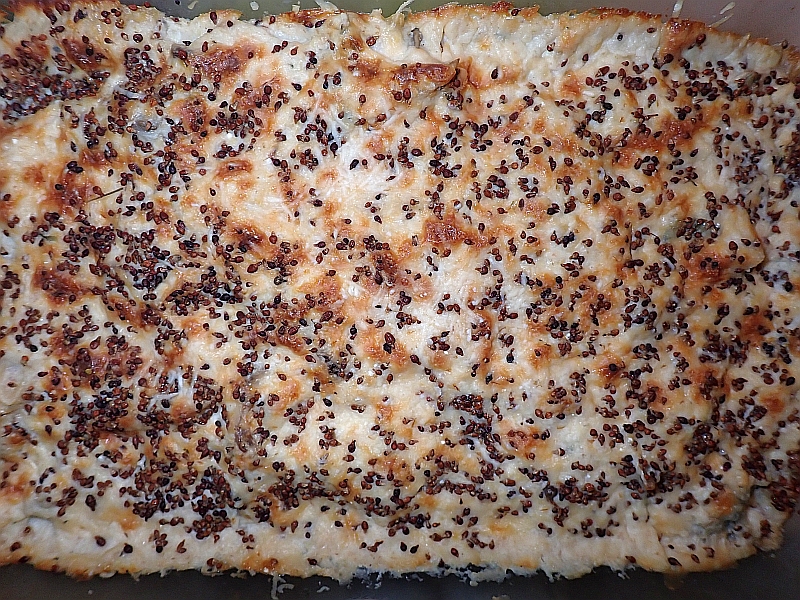
Red Cheeks and Fingerprints
I harvested two of the more beautiful broad (fava) beans I’ve grown yesterday, both of which originate in Canada. Red Cheek and Fingerprint favas. The diversity of forms, colours and sizes in these beans doesn’t cease to amaze me! I will definitely be trying to maintain these forms within my grex of broad beans (selection for a wide diversity of different forms every year and all planted close together so that they will cross promiscuously)!
Read legendary Will Bonsall’s article on fava beans where he talks about the diversity of forms and his collection of 250 varieties he maintains for Seed Savers Exchange: https://www.mofga.org/resources/beans/favas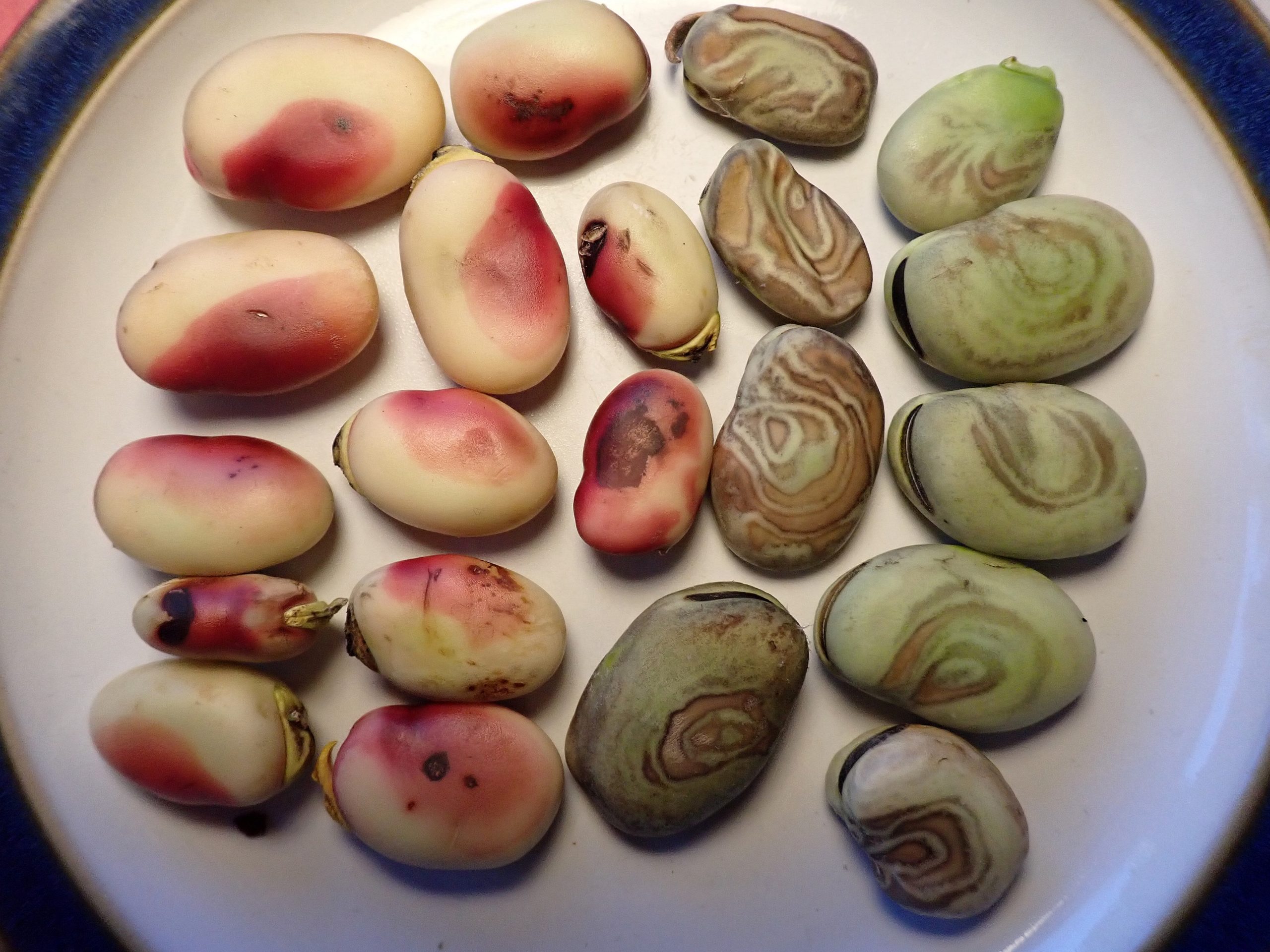

Wagtail at the North Pole
North Pole? Yesterday I worked for the first time this year at the Væres Venner Community Garden where KVANN (Norwegian Seed Savers) and I are involved. When I arrived there was a pair of white wagtails (linerle) at the North Pole of the World Garden (I’ve planted mainly perennial vegetables geographically on a 12m diameter garden with the centre representing the north pole, marked by a pile of rocks) :)
Otherwise, honey bees were active on a group of dwarf daffodils (påskeliljer), significantly earlier than other Narcissus:

First serious dig of the year preparing an area for potatoes, removing the last of the couch grass (kveke) roots (I hope) and planted about 30 Sarpo potatoes (Sarpo Mira and Sarpo Tominia). Also sowed broad beans, planted onion sets and caraway root (karve).
Overwintering of the 100+ fruit, berry and nut trees seems to be very good!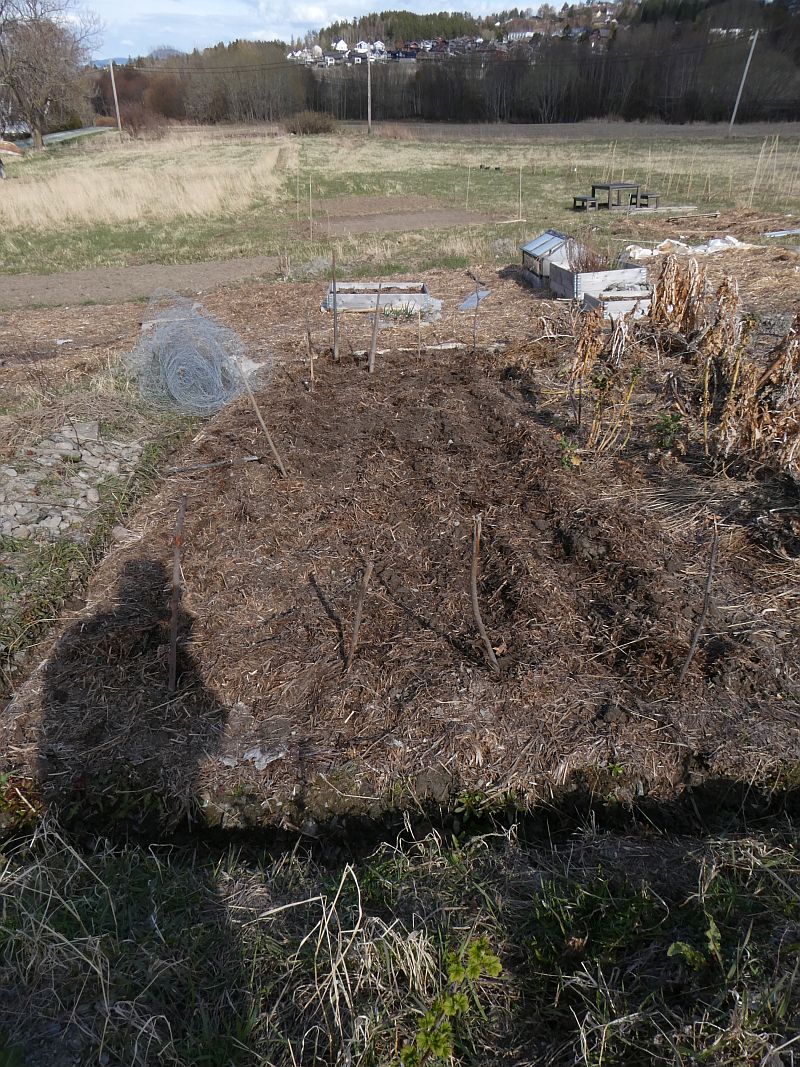
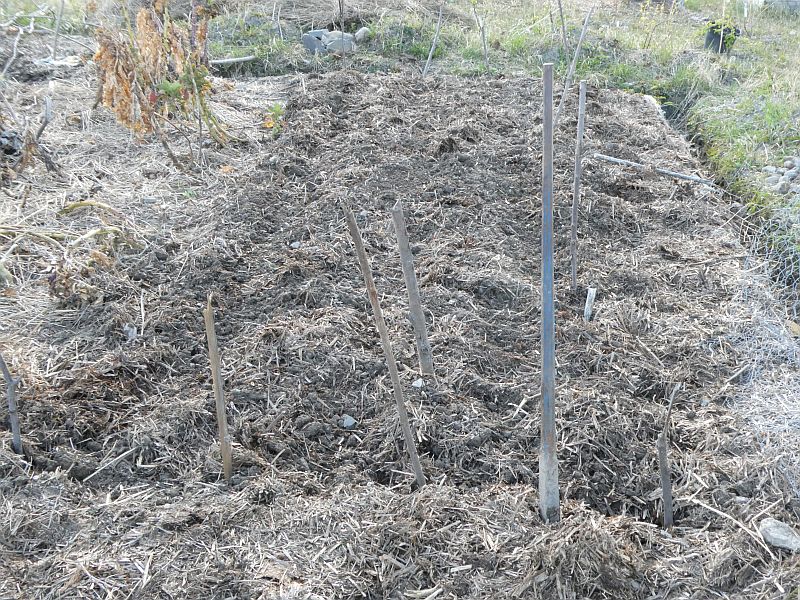
Broad Bean Mix
Broad beans (favas / bondebønner) will easily cross with other varieties that are growing nearby. In order to keep a variety pure, you need to isolate them physically. I like to have different varieties with different coloured flowers and bean colour in additon to maintaining early yielding varieties such as Express. I’ve found that I can plant different forms close together and if I save separately beans with different colour and bean size and mark for saving plants with particularly nice flower colours, then I can maintain a good mix in the same place. The flower forms below are all growing within a few metres in the Væres Venner community garden. They were grown from the mix of beans saved at the same place in 2018 (first picture). I don’t offer the different forms as named varieties, but as a mix or composite “Væres Venner Mix” so that others can also select for separate forms! Bumble bees were all over the flowers when I was there!
Victory falafels
Falafels can be home grown over most of Norway and if we are serious about climate change should become standar fare in kitchens, restaurants and supermarkets throughout the country. Dig for VICTORY against climate change!
The ingredients:
Broad beans / fava beans (bondebønner); grown in Malvik and stored dried
Victory onion (seiersløk) grows particularly well in the arctic (or replace with garlic or ramsons)
Golpar (spice from ground seed of any member of the Heracleum genus, including invasive Tromsøpalme, Heracleum persicum)
Barley flour (bygg) – I used100% whole grain
Eggs to bind
Fry in oil (sorry, I used imported olive oil)
(Optional: house grown chilis)
Decoration: Oxalis triangularis


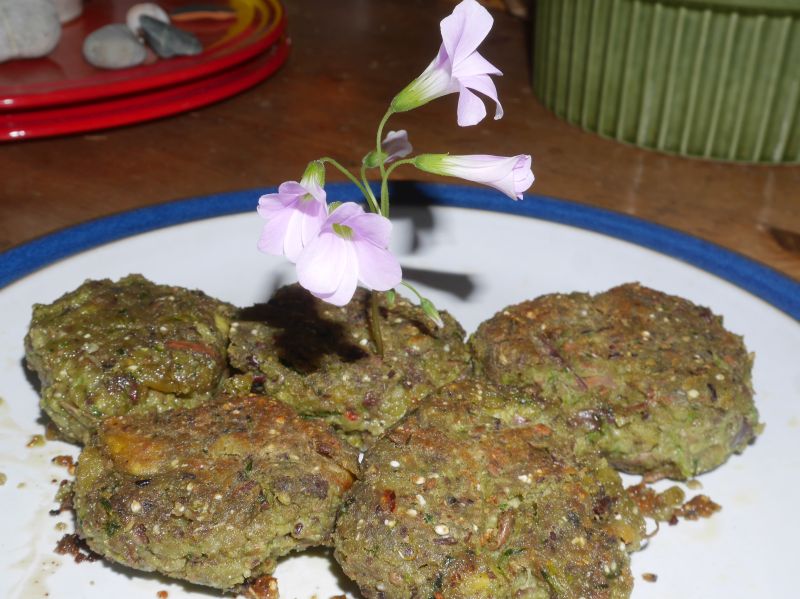
Veggie wholegrain pizza with New Zealand Spinach
We ate at home!

